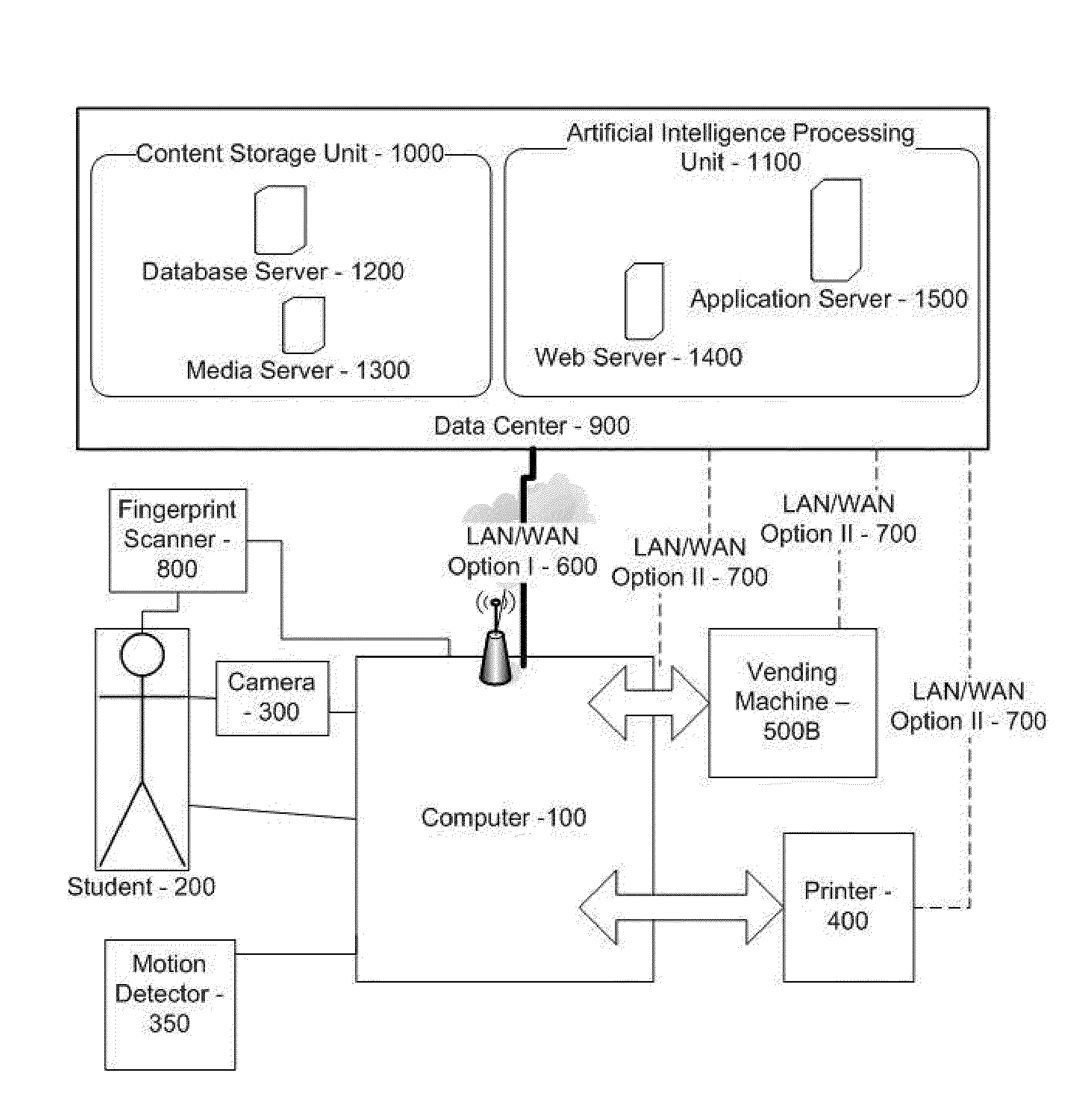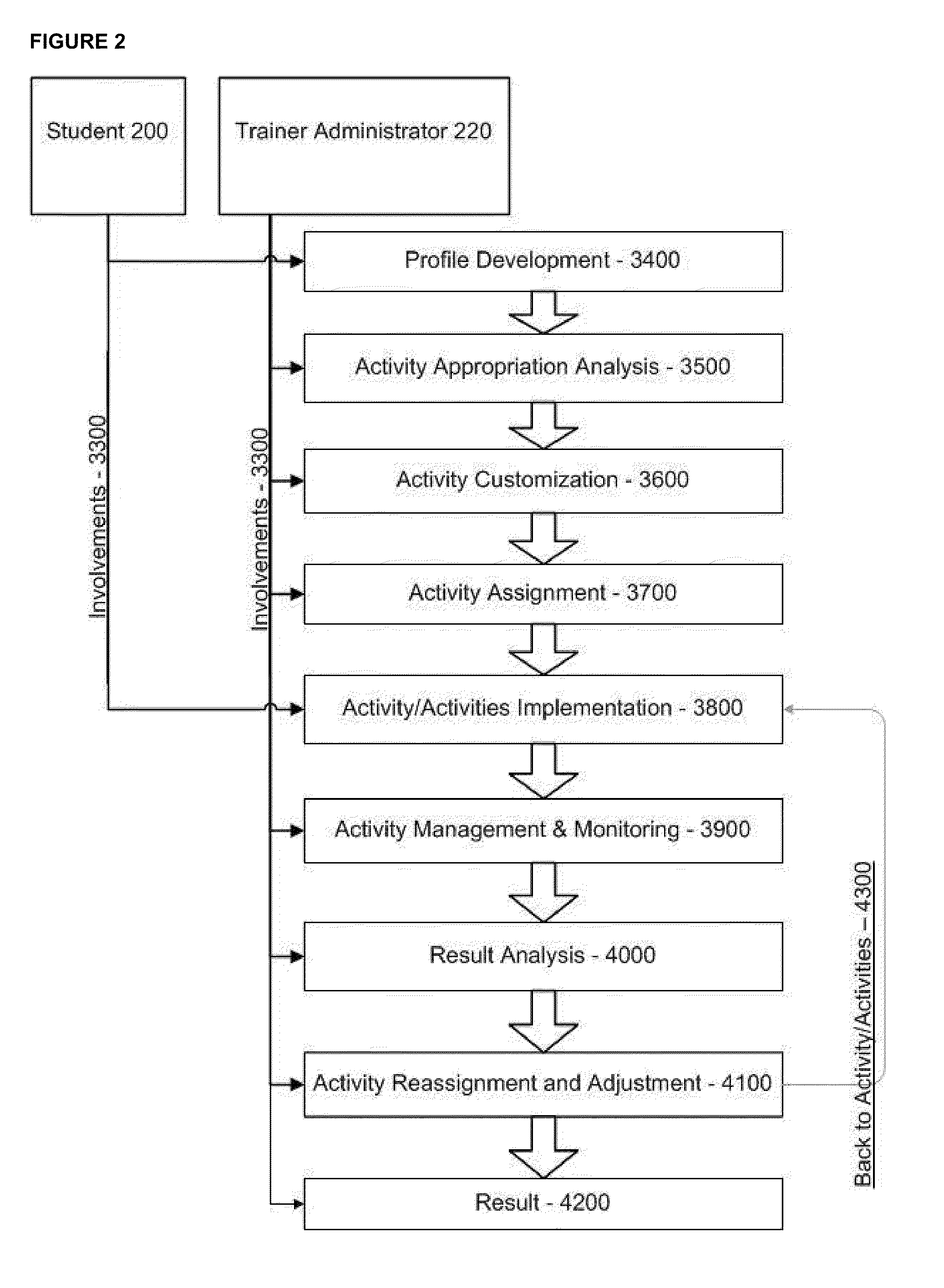Method and Apparatus for Training Brain Development Disorders
a brain development disorder and computer program technology, applied in the field of human subjects education, can solve the problems of limited attention given to the varied use of technology for children with autism, the lack of needs of children with autism, and the inability of parents to deal with the daily challenges of having a child with autism
- Summary
- Abstract
- Description
- Claims
- Application Information
AI Technical Summary
Benefits of technology
Problems solved by technology
Method used
Image
Examples
Embodiment Construction
The present invention as discussed hereinbefore relates to a method and apparatus to improve a subject's learning ability by utilizing a computer / kiosk system and reducing the social the element from the intervention. The method provides a plurality of content type in terms of training skill levels, subject or subject's known individual's avatar or picture, voice, topics of interest and / or content of the subject's interest. This plurality differs from each other in the form of animated content, and in the amount of audio processing applied to the speech commands and / or information. The method also selects from the plurality of content type based on the needs and training skill level to be presented to the subject that is associated with, or corresponds to, the subject's ability.
The method is presented to the Subject on a computer and interacts with the Subject via input / output devices like camera, touch screen, ID card, mouse, keyboard, joystick, fingerprint scanner, paper scanner, ...
PUM
 Login to View More
Login to View More Abstract
Description
Claims
Application Information
 Login to View More
Login to View More - R&D
- Intellectual Property
- Life Sciences
- Materials
- Tech Scout
- Unparalleled Data Quality
- Higher Quality Content
- 60% Fewer Hallucinations
Browse by: Latest US Patents, China's latest patents, Technical Efficacy Thesaurus, Application Domain, Technology Topic, Popular Technical Reports.
© 2025 PatSnap. All rights reserved.Legal|Privacy policy|Modern Slavery Act Transparency Statement|Sitemap|About US| Contact US: help@patsnap.com



